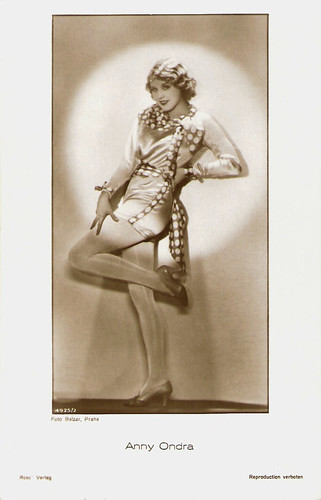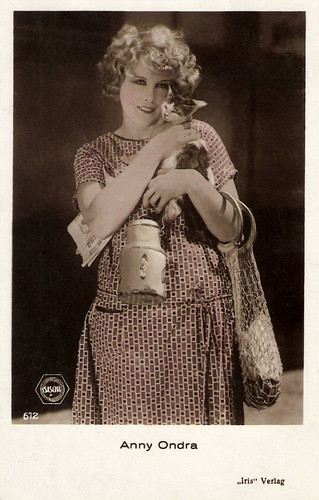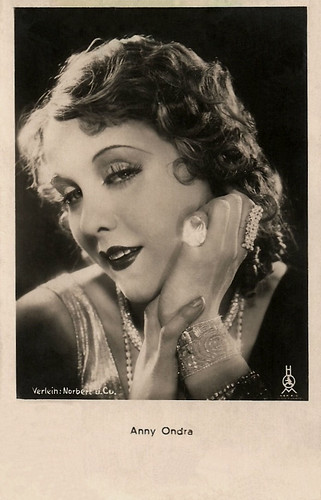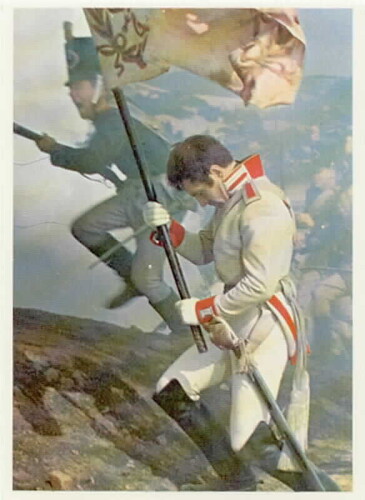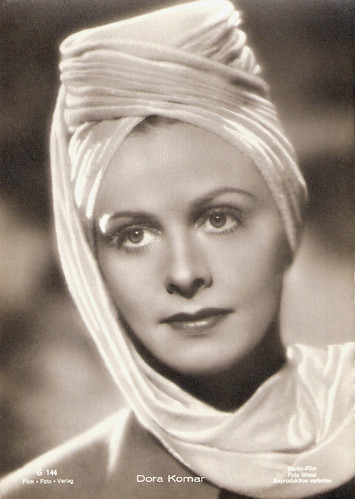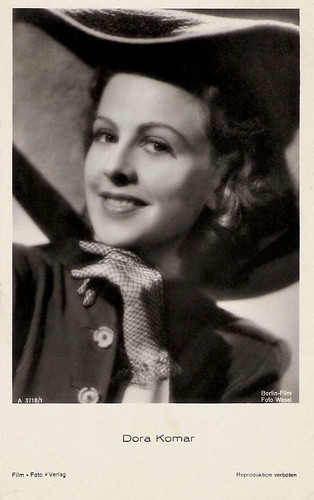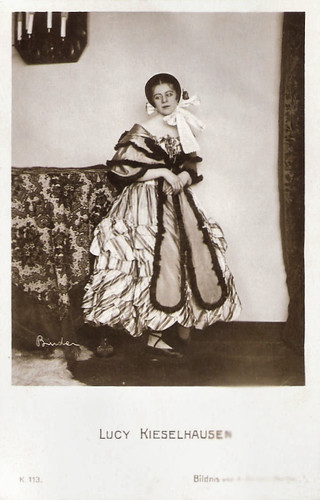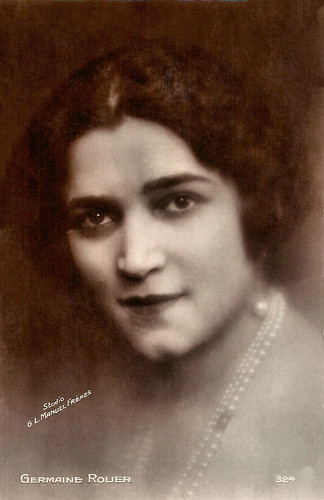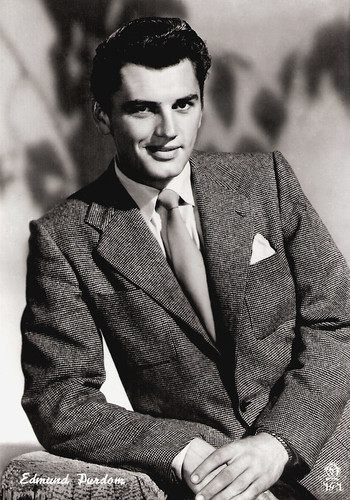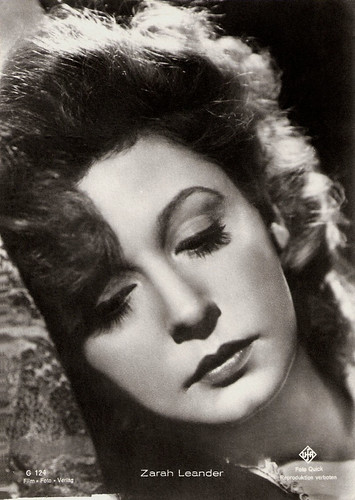Blonde French actress Brigitte Auber (1928) has worked extensively on the French stage and also appeared regularly in films and on TV. Her best-known role, and one of her few English-speaking parts, was opposite Cary Grant in Alfred Hitchcock's To Catch a Thief (1955).
![Brigitte Auber]()
French postcard by Editions du Globe, Paris, no. 134. Sent by mail in 1955. Photo: Sam Lévin.
Youth Culture
Brigitte Auber was born Brigitte Cahen de Labzac in Paris, France in 1928. She played a bit part in the comedy Antoine et Antoinette/Antoine and Antoinette (1947, Jacques Becker) featuring Roger Pigaut and Claire Mafféi. That same year she also was an extra in Les Portes de la nuit/Gates of the Night (1947, Marcel Carné) which starred Serge Reggiani and Yves Montand. Two years later she played the female lead opposite Daniel Gélin in the comedy Rendez-vous de juillet/Rendezvous in July (1949, Jacques Becker). The film about hopes, love, ambitions and friendship in a group of young jazz-loving Parisians, won the Critic’s Prize at the 1949 Cannes Film Festival. It has been credited as the first postwar European film to accurately depict European ‘youth culture’. Auber also starred in Sous le ciel de Paris/Under the Sky of Paris (1951, Julien Duvivier). Hal Erickson at AllMovie: “In episodic fashion, the story follows the grim and bloody path trod by an unknown psycho killer. Duvivier cannily plays the film's melodrama against the glamorous backdrops of fin de siecle Paris, concentrating on a handful of people whose lives are profoundly affected, directly and indirectly, by the fugitive murder. The best vignettes feature elderly character actress Sylvie as a spinster devoted to her houseful of cats, and Brigitte Auber as a wide-eyed country lass.” In Victor (1952, Claude Heyman), she co-starred with Jean Gabin, and in the comedy Femmes de Paris/Women of Paris (1953, Jean Boyer) with Michel Simon.
![Brigitte Auber]()
French postcard by Edition du Globe, Paris, no. 82. Photo: Studio Harcourt.
![Brigitte Auber]()
French postcard by Edition du Globe, Paris, no. 701. Photo: Studio Harcourt.
Cat Burglar
Brigitte Auber’s best known film is probably the romantic thriller To Catch a Thief (1955, Alfred Hitchcock). The film stars Cary Grant as a one-time cat burglar who has to save his reformed reputation by catching a new ‘cat’ preying on the wealthy tourists of the French Riviera. Grace Kelly co-stars as his romantic interest in her final film with Alfred Hitchcock. Auber played the beautiful daughter of one of Grant’s old gang members and a flame from his days in the French Resistance. Brendon Hanley at AllMovie: “There is also Hitchcock's emblematic technique of parallel characters, in this case Grant's cat burglar and Brigitte Auber's character, who is falsely accused of a crime. The latter perhaps wishes he committed the crime, and in a perverse sort of way, he actually does. To Catch a Thief appeared in the middle of Hitchcock's most popular string of films; though it may have been intended as a minor change of pace, the film is chock-full of classic images and thought-provoking peculiarity.” The athletic looking Aubert suited the part of the cat burglar. She also had success at circus galas at the trapeze or in acrobatic horse acts. Auber would never enjoy an international breakthrough. Alfred Hitchcock considered her for a role in his The Trouble with Harry (1955), but the role of the offbeat young mother and ex-wife of Harry went to Shirley MacLaine.
![Brigitte Auber]()
French postcard by Editions P.I., Paris, no. 659, offered by Les Carbones Korès Carboplane. Photo: Sam Lévin.
Nudists
Brigitte Auber worked most often in the French theatre and less so in the cinema. She reportedly recommended Alain Delon to the wife of director Yves Allégret who gave him his first film role in Quand la femme s’en mêle/Send a Woman When the Devil Fails (1957). Auber played a supporting part in the comedy Mon pote le gitan/My buddy the Gypsy (1959, François Gir), starring Louis de Funès and Jean Richard. In the following decades she mostly worked for TV. One of her few films was the French sex comedy Mon curé chez les nudistes (1982, Robert Thomas). It tells about a local priest (Paul Préboist) with a good mood who is sent to teach morals at a nudist colony with hilarious consequences. Brigitte Auber also had a supporting role in the adventure film The Man in the Iron Mask (1998, Randall Wallace) based on a novel by Alexandre Dumas. Leonardo DiCaprio played Louis XIV of France and Brigitte Auber played the Queen mother's (Anne Parillaud) attendant. Despite receiving a rather mixed to negative critical response, the film was successful financially, benefitting greatly from DiCaprio's post-Titanic boost in popularity. However it was Auber’s final film. She would later only appear in a few television productions, of which the last one was Oncle Paul/Uncle Paul (2000, Gérard Vergez).
Trailer To Catch a Thief (1955). Source: TheTrailerSiteDotCom (YouTube).
Sources: Hal Erickson (AllMovie), Brendon Hanley (AllMovie), Cinereves.com, Notstarring.com, Wikipedia and IMDb.

French postcard by Editions du Globe, Paris, no. 134. Sent by mail in 1955. Photo: Sam Lévin.
Youth Culture
Brigitte Auber was born Brigitte Cahen de Labzac in Paris, France in 1928. She played a bit part in the comedy Antoine et Antoinette/Antoine and Antoinette (1947, Jacques Becker) featuring Roger Pigaut and Claire Mafféi. That same year she also was an extra in Les Portes de la nuit/Gates of the Night (1947, Marcel Carné) which starred Serge Reggiani and Yves Montand. Two years later she played the female lead opposite Daniel Gélin in the comedy Rendez-vous de juillet/Rendezvous in July (1949, Jacques Becker). The film about hopes, love, ambitions and friendship in a group of young jazz-loving Parisians, won the Critic’s Prize at the 1949 Cannes Film Festival. It has been credited as the first postwar European film to accurately depict European ‘youth culture’. Auber also starred in Sous le ciel de Paris/Under the Sky of Paris (1951, Julien Duvivier). Hal Erickson at AllMovie: “In episodic fashion, the story follows the grim and bloody path trod by an unknown psycho killer. Duvivier cannily plays the film's melodrama against the glamorous backdrops of fin de siecle Paris, concentrating on a handful of people whose lives are profoundly affected, directly and indirectly, by the fugitive murder. The best vignettes feature elderly character actress Sylvie as a spinster devoted to her houseful of cats, and Brigitte Auber as a wide-eyed country lass.” In Victor (1952, Claude Heyman), she co-starred with Jean Gabin, and in the comedy Femmes de Paris/Women of Paris (1953, Jean Boyer) with Michel Simon.

French postcard by Edition du Globe, Paris, no. 82. Photo: Studio Harcourt.

French postcard by Edition du Globe, Paris, no. 701. Photo: Studio Harcourt.
Cat Burglar
Brigitte Auber’s best known film is probably the romantic thriller To Catch a Thief (1955, Alfred Hitchcock). The film stars Cary Grant as a one-time cat burglar who has to save his reformed reputation by catching a new ‘cat’ preying on the wealthy tourists of the French Riviera. Grace Kelly co-stars as his romantic interest in her final film with Alfred Hitchcock. Auber played the beautiful daughter of one of Grant’s old gang members and a flame from his days in the French Resistance. Brendon Hanley at AllMovie: “There is also Hitchcock's emblematic technique of parallel characters, in this case Grant's cat burglar and Brigitte Auber's character, who is falsely accused of a crime. The latter perhaps wishes he committed the crime, and in a perverse sort of way, he actually does. To Catch a Thief appeared in the middle of Hitchcock's most popular string of films; though it may have been intended as a minor change of pace, the film is chock-full of classic images and thought-provoking peculiarity.” The athletic looking Aubert suited the part of the cat burglar. She also had success at circus galas at the trapeze or in acrobatic horse acts. Auber would never enjoy an international breakthrough. Alfred Hitchcock considered her for a role in his The Trouble with Harry (1955), but the role of the offbeat young mother and ex-wife of Harry went to Shirley MacLaine.

French postcard by Editions P.I., Paris, no. 659, offered by Les Carbones Korès Carboplane. Photo: Sam Lévin.
Nudists
Brigitte Auber worked most often in the French theatre and less so in the cinema. She reportedly recommended Alain Delon to the wife of director Yves Allégret who gave him his first film role in Quand la femme s’en mêle/Send a Woman When the Devil Fails (1957). Auber played a supporting part in the comedy Mon pote le gitan/My buddy the Gypsy (1959, François Gir), starring Louis de Funès and Jean Richard. In the following decades she mostly worked for TV. One of her few films was the French sex comedy Mon curé chez les nudistes (1982, Robert Thomas). It tells about a local priest (Paul Préboist) with a good mood who is sent to teach morals at a nudist colony with hilarious consequences. Brigitte Auber also had a supporting role in the adventure film The Man in the Iron Mask (1998, Randall Wallace) based on a novel by Alexandre Dumas. Leonardo DiCaprio played Louis XIV of France and Brigitte Auber played the Queen mother's (Anne Parillaud) attendant. Despite receiving a rather mixed to negative critical response, the film was successful financially, benefitting greatly from DiCaprio's post-Titanic boost in popularity. However it was Auber’s final film. She would later only appear in a few television productions, of which the last one was Oncle Paul/Uncle Paul (2000, Gérard Vergez).
Trailer To Catch a Thief (1955). Source: TheTrailerSiteDotCom (YouTube).
Sources: Hal Erickson (AllMovie), Brendon Hanley (AllMovie), Cinereves.com, Notstarring.com, Wikipedia and IMDb.













